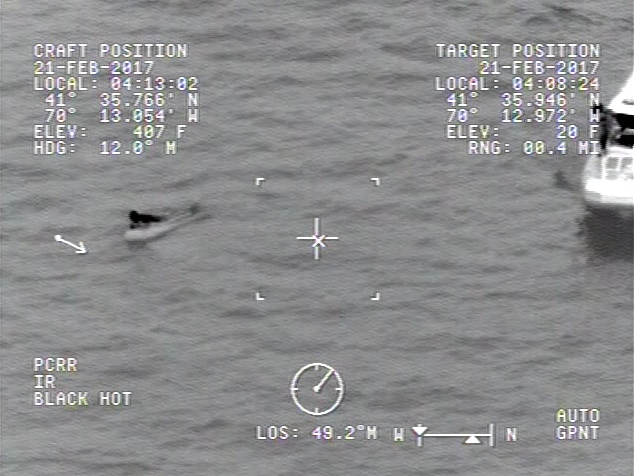Video: Teenager rescued from mud and quicksand at Morecombe
The 15-year-old boy was stuck in the mud and quicksand for more than two hours before he was saved by the RNLI and UK Coastguard
A 15 year old boy has been rescued from mud and quicksand at Morecambe after an ordeal lasting over two hours.
The UK Coastguard was alerted at 1400 on 11 March 2017 by a family member reporting that the boy was stuck.
Holyhead Coastguard coordinated the rescue and sent Knott End, Arnside and Morecambe Coastguard Rescue Teams and the Coastguard helicopter based at Caernarfon.
The RNLI Morecambe hovercraft joined the rescue teams out on the mud and managed to free the boy at 1600 using specialist mud rescue equipment.
He was transferred to the helicopter landing site on shore using the hover craft and transferred to hospital.
Fortunately the tide was going out during the rescue effort on Saturday afternoon.
The UK Coastguard has now issued advice about the dangers of mud and quicksand following the incident.

Creidt: AnemoneProjectors – Peter O’Connor/Wikimedia Commons
It is as follows:
- If you become stuck in mud our advice is always the same ‘Stay calm, try and spread your weight as much as possible and avoid moving.
- Call 999 and ask for the Coastguard.
- Anybody trapped should also discourage other well-meaning members of the public from attempting to rescue them because without the proper equipment they could become stuck too.’
The Maritime and Coastguard Agency said that a significant part of the UK coastline could be categorised as soft ground, mainly mud or quicksand.
In either case it means that the foreshore is low lying, open to the elements, tidal and not accessible to unaided conventional vehicles.
The UK Coastguard uses the generic term ‘mud rescue’ to cover mud, quicksand and any other substance on the shorelines from which a casualty needs rescuing.
Pair saved from rough seas after attempting to rescue a dog
Coastguard specific techniques and practices are designed to cope with mud, sand and quicksand.
Unlike mud, quicksand is not obvious to the eye and there is generally little or no warning of the transition from firm sand to quicksand.
Pockets of quicksand are always on the move and will be different positions with every successive tide.
People can find themselves in soft ground either when the surface is so soft that they simply sink to a point where movement becomes impossible, or they break through a layer of relatively firm mud into a soft bubble described above.
Invariably, with quicksand there is generally little or no warning of transition from firm sand to quicksand.
People can also require rescue as a result of exhaustion while trying to wade through soft ground for all they may not be trapped. In all cases, the casualty may be at risk from incoming tide.
The effect in both cases is that when the person tries to pull their legs free they create a vacuum underneath their feet and around the leg which prevents escape and further movement can make the situation worse.
One immediate measure that can be taken to prevent the casualty sinking further is to sit on the surface of the mud/quicksand, thus spreading the load and may reduce further risk to injured casualties.
Rescued sailors reunited with yacht after abandoning it in “treacherous” seas
Nick Dwyer and Barbara Heftman have been reunited with their yacht after abandoning it 210 nautical miles off Sydney, Australia…
Night rescue for broken down dive boat in Pentland Firth
Engine failure left the dive boat, MV Karin, stranded in Pentland Firth in the north of Scotland. They were given…
Video: Man rescued after clinging to boat for more than 12 hours
For more than 12 hours, Arthur Moscufo clung to his boat waiting for rescue. Watch the moment he was saved…











